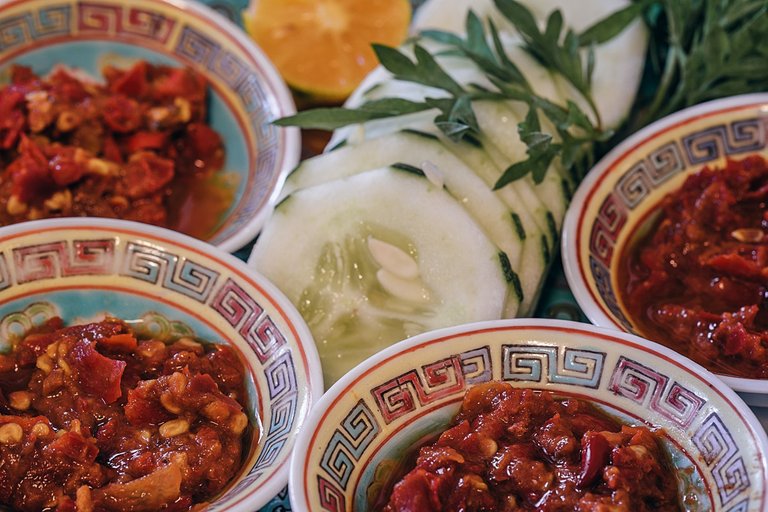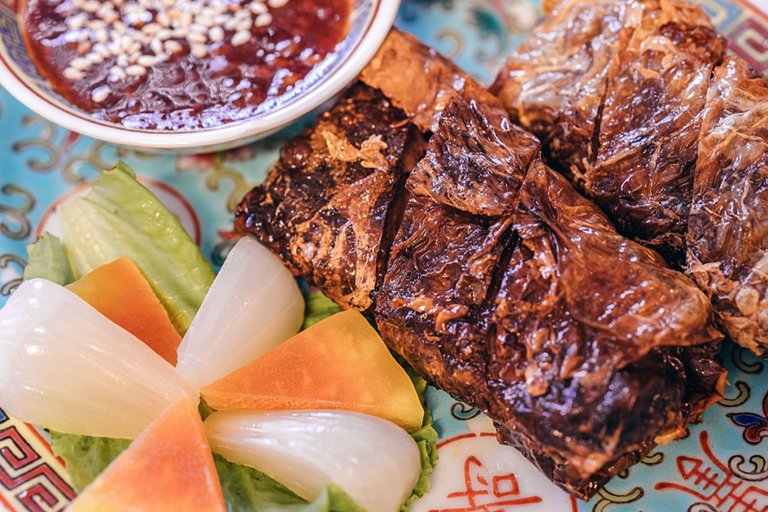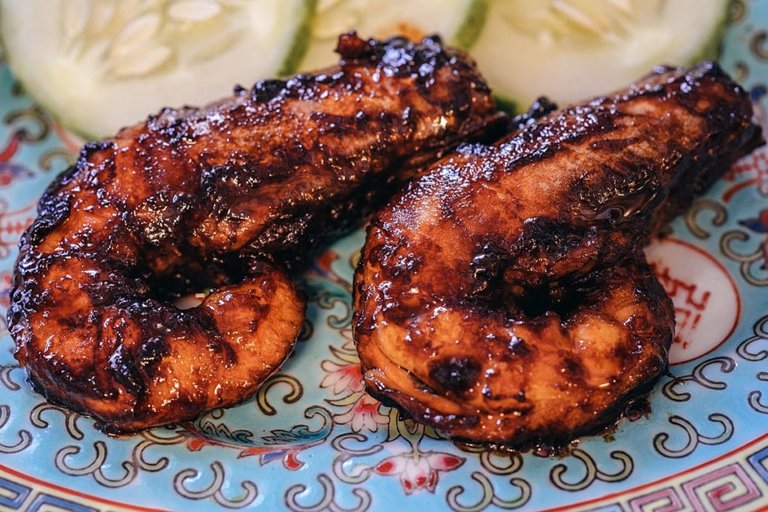 In a previous blog post we described Peranakan history and style, which is a great mixture of a few cultures. This time we will take a closer look at the most influential part of Peranakan heritage– its cuisine. Nowadays fusion cuisine is nothing unusual, but back in the time of Perankan history, fusion wasn’t common. Peranakan cuisine is one of the first known fusion cuisines. They were blending Chinese ingredients and cooking techniques with the spices and native ingredients used by indigenous Malays. That is why the Peranakan food is typically aromatic, rich and spicy.
In a previous blog post we described Peranakan history and style, which is a great mixture of a few cultures. This time we will take a closer look at the most influential part of Peranakan heritage– its cuisine. Nowadays fusion cuisine is nothing unusual, but back in the time of Perankan history, fusion wasn’t common. Peranakan cuisine is one of the first known fusion cuisines. They were blending Chinese ingredients and cooking techniques with the spices and native ingredients used by indigenous Malays. That is why the Peranakan food is typically aromatic, rich and spicy.

Perankan food looks simple, but it's far away from that
There were regional variations in Peranakan cuisine throughout the Strait Settlements, more about the Peranakan history you can read here. Dishes in the northern part of Malaysia had notable Thai influences, which were reflected in the use of spice and a liberal use of tamarind and sour ingredients. Dishes from the south were sweeter and milder with generous uses of coconut milk.
Why was there such a great fusion of all these styles and influences? Mostly because Babas conducted business from their homes. They hosted business partners from various cultures and they needed to please each of their potential business partners. At the same dinner table, there could be sitting western, Thai, Chinese, and Malay businessmen. So, Nyonyas, the wives of the businessmen, were tasked with satisfying all these pallets in one meal. These women were forced to become skilled in cuisines of all kinds. While this has resulted in so many different styles of Nyonya dishes, there are still some similarities. Signature Peranakan dishes are accessible in different places under the same name, but the seasonings used in the preparation of the dish differ from place to place.

Those were one of the best shrimps we ever had!
It was common for Babas to marry more than one woman, and sometimes from different cultures to ensure that their skills in the kitchen were able to satisfy the different tastes. However, it did not create a harmonious living environment as many of the wives were forced to compete for the best-made dinners and the title of the favorite wife. Many of the Nyonyas closely guarded their secret recipes and passed them down from mother to daughter. As a consequence, the recipes improved with each generation. As the Babas became more wealthly it made it possible for the Nyonya wives to hire servants that helped her in the kitchen, so she could focus on mastering the dishes.

Can you see how thin are the slices of herbs in this dish?
While many dishes were invented to satisfy business partners, certain foods were kept only for special occasions. Food had religious significance, and many dishes were originally served only on holidays. Rice was colored yellow in a belief that this enhanced its life-giving qualities and rice dumplings were sometimes colored red to encourage good fortune. Kueh lapis, a confection made up of multiple layers, symbolized the ladder or prosperity.

Perankan food is colorful
In preparation of Nyonya food patience is the key. Some recipes start with preparation a day in advance, due to the marinating, spice mixing, or pickling processes. Certain precautions were also time-consuming, like making sure all food was in bite-size morsels when served, as there were no knives in Peranakan place settings. Most of the meat, fish, and seafood had to be boneless and ready to eat. Cakes, fruit, and vegetables had to be sliced diagonally. For example, in a recipe for rice salad, you need to cut 2-inch-long leaf roll of herbs into 100 hundred stripes, symbolizing 100 percent of heart giving into this dish.
INGREDIENTS IN NYONYA COOKING
Peranakan cuisine is rich, when it comes to its ingredients. An interesting fact is that the food component most associated with Peranakans is actually poisonous if unprocessed. This is the buah keluak, the nut of the kepayang tree. They use it to produce rich sauce as an accompaniment to a range of meats. Other common ingredients are coconut milk, galangal, turmeric, candlenuts, laksa leaves, pandan leaves, tamarind pulp, lemongrass, chillies, shallots, basil, coriander, mangoes, agar, black prawn paste, blimbing (smaller sour cousin of the yellow star fruit or carambola), curry leaves, dried prawns, kaffir lime leaves, dried sour fruit, Gula Melaka, five-spice powder (star anise, fennel seeds, cloves, cinnamon and peppercorns), nutmeg and some others.

Pai Tee appetizer
Traditional Nyonya cooking was difficult to master because standard measurements were seldom used in the kitchen. Everything was done through the agak-agak (estimation) method, where a pinch of this or a toss of that, a handful of this and a thumbful of that were the only cooking measurements at hand. Luckily, thanks to some individuals, we have today amazing recipe books, where you can make your own Peranakan dish. I recommend these three books: Tan, Cecilia: The Penang Nyonya cookbook; Chia, Philip: Peranakan Heritage Cooking and Tan, Florence: Recipes from the Nyonya kitchen.
If you like our work, please support us
BTC 3ANoNhSW5m2toMNr4bina2uNEgC1ehinYg
ETH 0x18D454A20e06Dcd78637608170dc0161a35211aF
or on the decentralized social network:

Sources: Tan, Cecilia: The Penang Nyonya cookbook; Chia, Philip: Peranakan Heritage Cooking and Tan, Florence: Recipes from the Nyonya kitchen.
Posted from my blog with SteemPress : http://wnfdiary.com/peranakan-cuisine-first-fusion-kitchen/







Congratulations, Your Post Has Been Added To The Steemit Worldmap!
Author link: http://steemitworldmap.com?author=wnfdiary
Post link: http://steemitworldmap.com?post=peranakancuisineoneofthefirstknownfusioncuisines-dzjgk2vw2x
Want to have your post on the map too?
I suppose you meant to embed a hyperlink directing to somewhere at "here" in the above statement. You may want to fix that.
It's a nice and informative article and it's well written with mouth-watering images.
Ouuu thank you. Will check! Thank you
Hi wnfdiary,
Visit curiesteem.com or join the Curie Discord community to learn more.
Thank you very much. You are the best!
Such delicious food indeed. Great effort to give info about the background of the food. Congratulations! You have been added to the free dust upvote initiative where you get a dust upvote daily. This is a community support initiative. It does not cost you anything except to continue to produce with quality article.
Ouuuuu thank you very much! Ofcourse I will continue with amazing posts. Thank you again